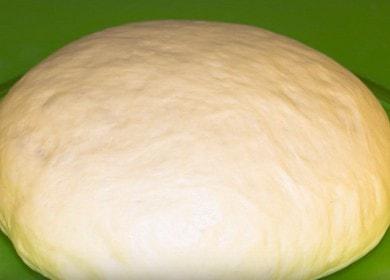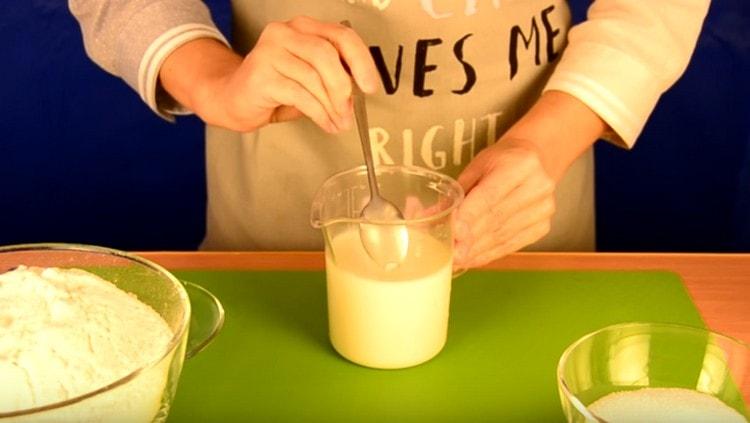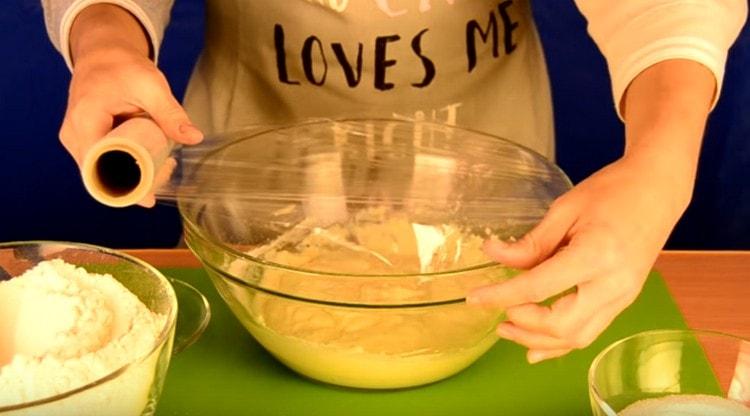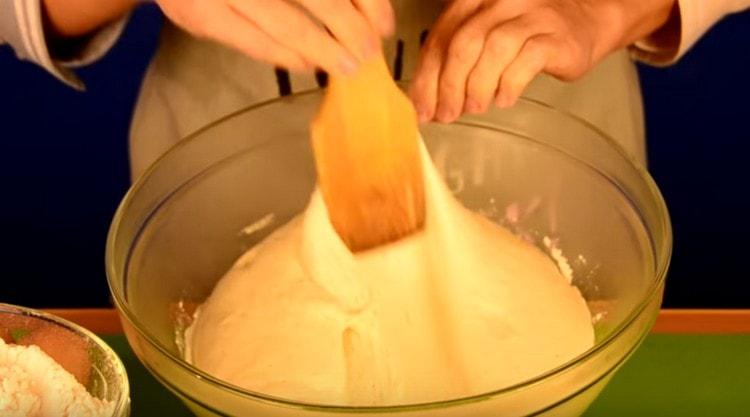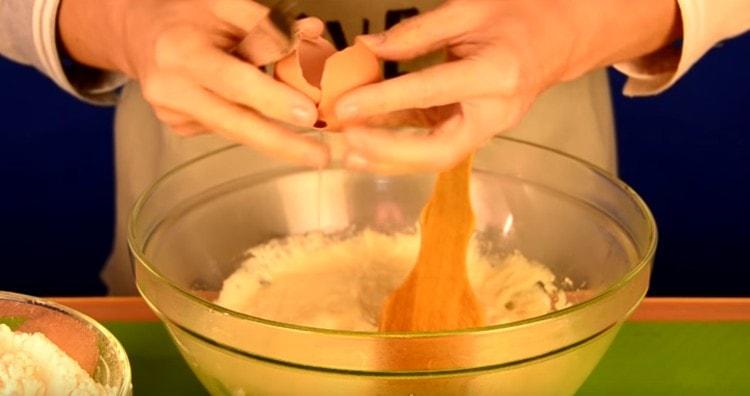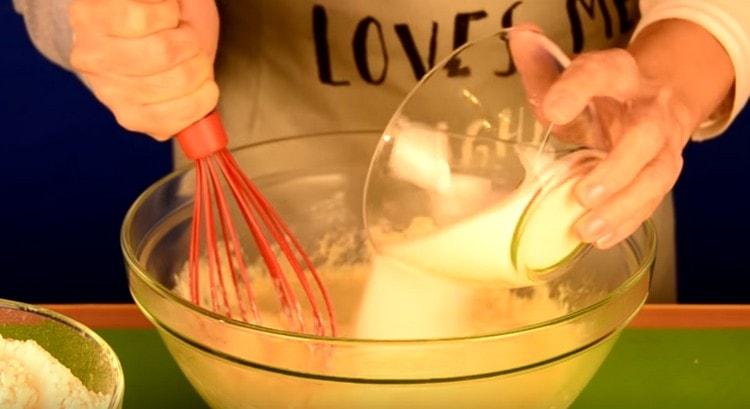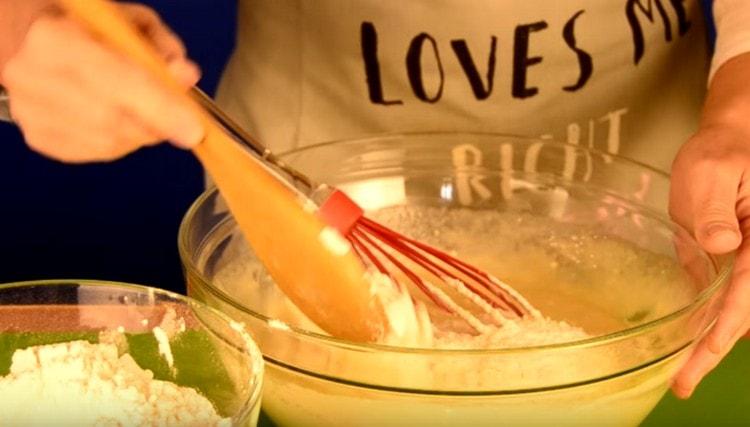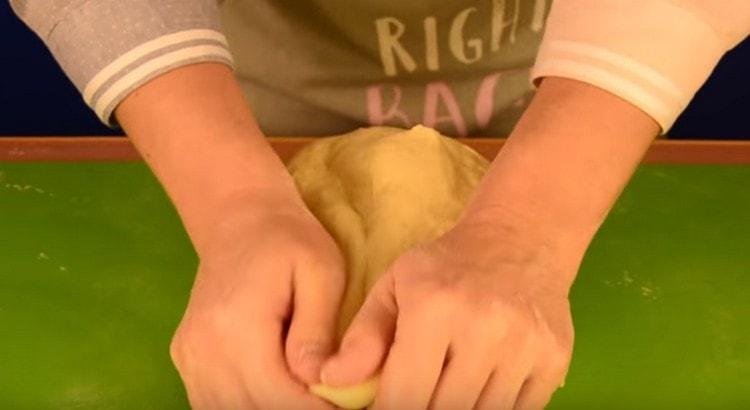Kitchen appliances and utensils:
- deep mixing bowl;
- whisk;
- wooden spatula;
- sieve for sifting flour;
- cling film.
Ingredients
| Premium wheat flour | about 600 g |
| Milk 3.5% | 0.3 l (500 g) |
| Chicken egg | 2 pcs. |
| Granulated sugar | 150 g |
| Baking margarine (can be replaced with butter) | 1/2 pack (100 g) |
| Fresh yeast | 1/4 pack (20 g) |
| Salt | 1/2 tsp (5 g) |
Step cooking
- Before you start kneading the dough, you need to sift the flour, remove the eggs from the refrigerator so that they have time to warm to room temperature, warm the milk and melt the margarine.

- After that, you can begin to knead the dough. Dissolve the yeast in milk and pour into the dishes in which you will make the dough. Milk must be warm, but not hot.

- Add a little sugar and gradually introduce the flour. The task is to get a dough of such a consistency as thick sour cream, so we add flour in several stages.

- After the dough is ready, we cover it with a film and allow it to disperse. If the dough rises poorly, you can add a little yeast.

- When the dough has increased in volume by 2-2.5 times, unpack it and knock it out to release carbon dioxide bubbles, which inhibit the work of yeast bacteria.

- Add the rest of the products. Eggs first. Mix everything thoroughly until smooth.

- Then sugar. Mix again.

- Then salt and melted margarine. We do not introduce new ingredients until we achieve homogeneity with the previous ones.

- Add the flour.
 Did you know? Please note that while the dough is liquid, it is convenient to mix with a whisk. Thick dough is easier to mix using a wooden spatula. Tune in to the fact that the process of kneading the dough is quite long and laborious. But the quality of your baking will depend on the quality of kneading, so do not save time and energy.
Did you know? Please note that while the dough is liquid, it is convenient to mix with a whisk. Thick dough is easier to mix using a wooden spatula. Tune in to the fact that the process of kneading the dough is quite long and laborious. But the quality of your baking will depend on the quality of kneading, so do not save time and energy. - From the periphery to the center, knead the dough, adding flour each time.

- When it’s already difficult to stir with a spatula, we go to the table. We cover the table with a good layer of flour and spread the dough on it. Again from the periphery to the center we continue kneading. The main goal is to get a dough that won't stick to your hands.

- As soon as you begin to feel that it is no longer sticking, stop adding flour, but keep kneading.

- After mixing, cover the finished dough with a towel or suitable utensils to allow it to disperse, and wait until it increases in volume 2-2.5 times.

- If the dough floats, add more flour. If it doesn’t float, a tablespoon is enough to knead again and free it from carbon dioxide. After that, you can begin to form a cake.

Video recipe
In this video you will see a detailed description of each step in the preparation of the dough for the jam pie. The author talks in detail about how to prepare the dough, how to knead the dough and free it from unnecessary carbon dioxide. With such a base, your pastries will be second to none.
Other cake recipes
Jellied pie with chicken
Kefir meat pie
Pie with viburnum
Chicken and Mushroom Pie
